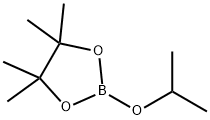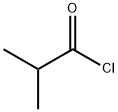Isobutaneboronic acid
Synonym(s):Isobutaneboronic acid
- CAS NO.:84110-40-7
- Empirical Formula: C4H11BO2
- Molecular Weight: 101.94
- MDL number: MFCD00134156
- EINECS: 617-531-4
- SAFETY DATA SHEET (SDS)
- Update Date: 2025-10-27 10:58:52

What is Isobutaneboronic acid?
Chemical properties
White to Almost white powder to crystal
The Uses of Isobutaneboronic acid
suzuki reaction
The Uses of Isobutaneboronic acid
2-Methylpropylboronic Acid is used in the preparation of isocoumarin analogs as inhibitors of γ-secretase cleavage. Also used in the preparation of peptide boronc acid.
The Uses of Isobutaneboronic acid
(2-Methylpropyl)boronic acid can be used as:
A reactant in the preparation of 4-isobutylisoquinoline from 4-bromoisoquinoline by Suzuki-Miyaura type couple reaction.
A catalyst along with aluminum hydroxide, boric acid in the polymerization of styrene.
It can also be used as a reactant in:
Copper catalyzed cross-coupling reactions.
The synthesis of polyborylalkanes by Ir-catalyzed C-H borylation reaction.
The preparation of heterosubstituted diazaboroles and borinines.
Properties of Isobutaneboronic acid
| Melting point: | 108-111 °C(lit.) |
| Boiling point: | 180.0±23.0 °C(Predicted) |
| Density | 0.910±0.06 g/cm3(Predicted) |
| storage temp. | Inert atmosphere,Store in freezer, under -20°C |
| solubility | Acetonitrile (Slightly), DMSO, Methanol (Slightly) |
| form | Crystalline Powder or Flakes |
| pka | 10.49±0.43(Predicted) |
| color | White to cream |
| CAS DataBase Reference | 84110-40-7(CAS DataBase Reference) |
Safety information for Isobutaneboronic acid
| Signal word | Warning |
| Pictogram(s) |
 Exclamation Mark Irritant GHS07 |
| GHS Hazard Statements |
H315:Skin corrosion/irritation H319:Serious eye damage/eye irritation H335:Specific target organ toxicity, single exposure;Respiratory tract irritation |
| Precautionary Statement Codes |
P261:Avoid breathing dust/fume/gas/mist/vapours/spray. P304+P340:IF INHALED: Remove victim to fresh air and Keep at rest in a position comfortable for breathing. P305+P351+P338:IF IN EYES: Rinse cautiously with water for several minutes. Remove contact lenses, if present and easy to do. Continuerinsing. P405:Store locked up. |
Computed Descriptors for Isobutaneboronic acid
Isobutaneboronic acid manufacturer
JSK Chemicals
3Y
Phone:+91-9879767984
Whatsapp: +91-9879767970
product: (2-Methylpropyl)boronic acid, 95% 99%
Sainor Laboratories Pvt Ltd Unit III
1Y
Phone:+91-9182033729
Whatsapp: +91-9666644167
product: 84110-40-7 98%
SAKEM LLP
1Y
Phone:+91-9676889998
Whatsapp: +91-9676889998
product: 84110-40-7 Isobutylboronicacid 98%
New Products
4,4-Difluoropiperidine hydrochloride tert-butyl 9-methoxy-3-azaspiro[5.5]undecane-3-carboxylate Indole Methyl Resin N-Isopropylurea N,N-Dicyclohexylcarbodiimide(DCC) MELDRUMS ACID 5-METHYLISOXAZOLE-4-CARBOXYLIC ACID Magnessium Bis glycinate Zinc ascorbate 1-bromo-2-butyne 2-acetamidophenol 9(10H)-anthracenone Erythrosin B, 4-Piperidinopiperidine 2-((4-morpholinophenylamino) (methylthio) methylene) malononitrile 2,4-dihydroxybenzaldehyde 3-(4-morpholinophenylamino)-5-amino-1H-pyrazole-4-carbonitrile Methyl 2-methylquinoline-6-carboxylate 2,6-dichloro-4-nitropyridine 4-Bromo-2-chlorobenzonitrile 2-(benzylamino)acetic acid hydrochloride 4-(tert-Butoxycarbonylamino)but- 2-ynoic acid 3,4-dihydro-2H-benzo[b][1,4]dioxepine 1-Phenyl-1-cycloprppanecarboxylicacidRelated products of tetrahydrofuran








You may like
-
 84110-40-7 98%View Details
84110-40-7 98%View Details
84110-40-7 -
 (2-Methylpropyl)boronic acid, 95% 99%View Details
(2-Methylpropyl)boronic acid, 95% 99%View Details
84110-40-7 -
 Isobutaneboronic acid, ≥95% CAS 84110-40-7View Details
Isobutaneboronic acid, ≥95% CAS 84110-40-7View Details
84110-40-7 -
 Isobutylboronic Acid (contains varying amounts of Anhydride) CAS 84110-40-7View Details
Isobutylboronic Acid (contains varying amounts of Anhydride) CAS 84110-40-7View Details
84110-40-7 -
 Isobutylboronic acid CAS 84110-40-7View Details
Isobutylboronic acid CAS 84110-40-7View Details
84110-40-7 -
 (2-Methylpropyl)boronic acid CAS 84110-40-7View Details
(2-Methylpropyl)boronic acid CAS 84110-40-7View Details
84110-40-7 -
 Thermo Fisher Isobutylboronic AcidView Details
Thermo Fisher Isobutylboronic AcidView Details
84110-40-7 -
 84110-40-7 Isobutylboronicacid 98%View Details
84110-40-7 Isobutylboronicacid 98%View Details
84110-40-7
Statement: All products displayed on this website are only used for non medical purposes such as industrial applications or scientific research, and cannot be used for clinical diagnosis or treatment of humans or animals. They are not medicinal or edible.
